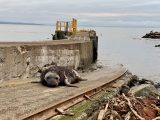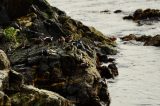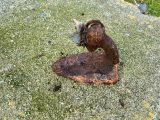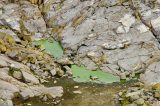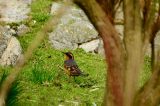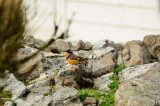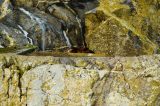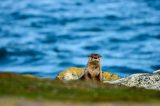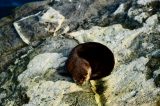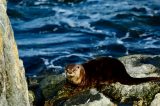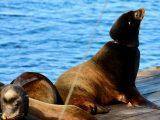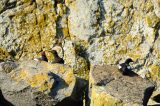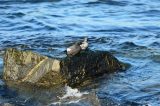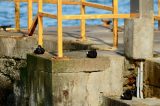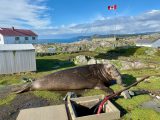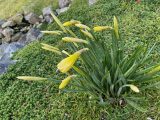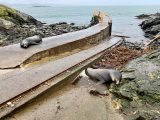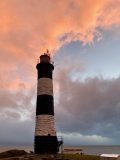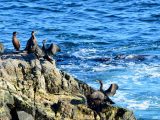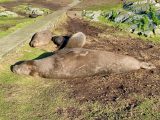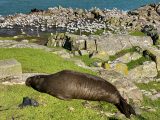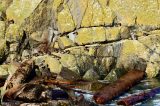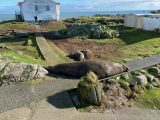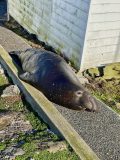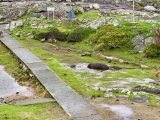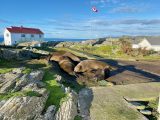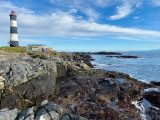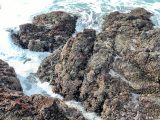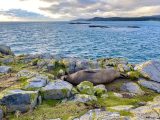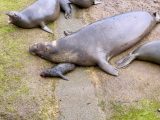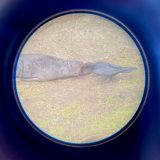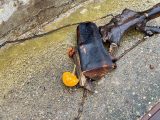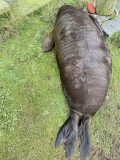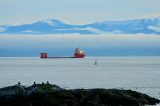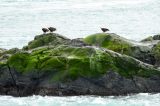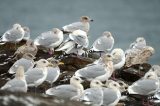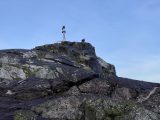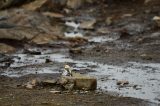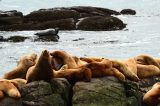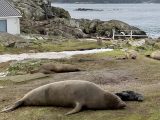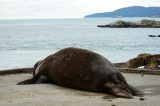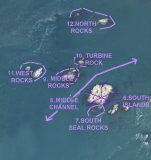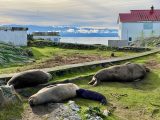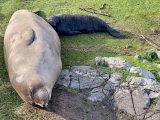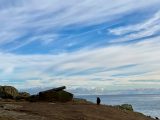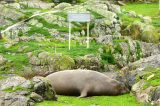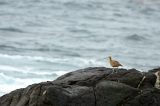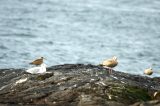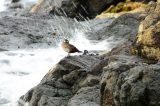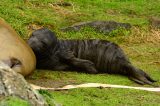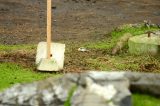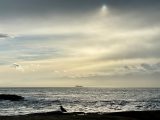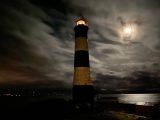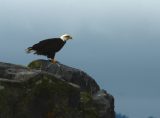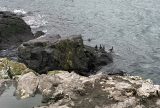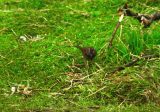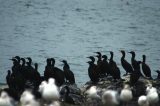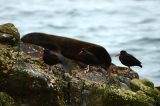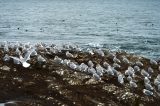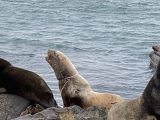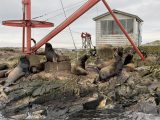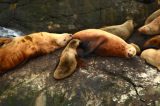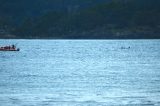Wind: yesterday 2-16 knots from S to W, today 0-36 knots from W to S to W
Sea State: yesterday rippled, today calm until mid afternoon when seas turned rough
Visibility: yesterday 10-15 NM, today 5-15 NM
Sky: yesterday overcast, today overcast with patches of sun then rain in late afternoon
Temperature: yesterday 7-9 °C, today 6-8 °C
Atmospheric CO2: 413.47 ppm (recorded by NOAA at Mauna Loa Observatory, Hawaii)
The numbers of sea lions continues to be low. For the first time this winter, there were more steller than california sea lions in the ecological reserve.
For the past day, the elephant seals have all been stationary. An elephant seal was seen on Middle Rocks today along with california sea lions. I believe it’s the smaller adult male that was on the main island until recently.
Having heard the killdeer on many evenings this winter, but not seen any, I finally saw one this morning on the lawn. They are named for their shrill repetitive call which sounds like “kill-deer!”
Here are the results from the weekly census observed on Friday, February 28:
7 elephant seals (4 adult males, 2 female pups, 1 male pup)
54 steller sea lions
53 california sea lions
86 harbour seals
5 bald eagles (2 adults, 3 juveniles)
26 Canada geese
9 brandt’s cormorants
10 double-crested cormorants
31 pelagic cormorants
72 gulls (mostly thayer’s)
8 black oystercatchers
66 pigeon guillemots
17 harlequin ducks
1 killdeer
15 black turnstones
6 surfbirds
1 fox sparrow
Yesterday, Greg, Alex, Warren and Cole were on the island to do maintenance on the desalinator and batteries. Two tour boats were seen in the ecological reserve each day. This afternoon, the RCM SAR boat from Sooke drove around the main island and the crew took photos.
- The oldest elephant seal pup coming up the ramp after his second swim yesterday morning. All the moving along the paths and rocks, as well as swimming appear to be helping him moult his pup fir.
- Killdeer on the grass
- Harlequin ducks on the rocks
- The majority of the sea lions were on the north side of the island
- I found the edge of this poking out of the grass behind the house. I’m not sure what it is. It appears to have lead in and around the rounded part.
- A male elephant seal hauled out with the california sea lions on the Middle Rocks.
- Many of the large puddles on the island are growing algae.
- The waxing crescent moon seen at 17:55, a couple minutes before sunset this evening.
